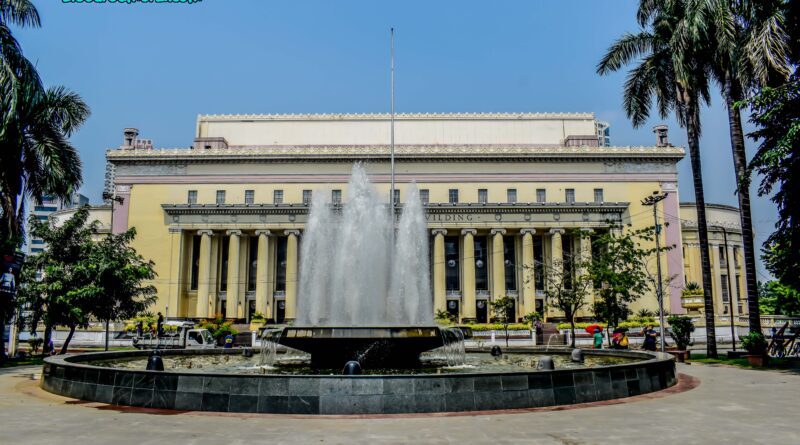Revisiting Manila Central Post Office : What’s Inside the Manila Post Office (Before the Fire Incident)
Few months before the devastating fire incident in Manila Central Post Office, I was lucky enough to visit the place as part of the Lawton-Arroceros Heritage Walk Tour by Renacimiento Manila. We had a chance to explore what’s inside the Manila Central Post Office and learned history behind this famous edifice in Lawton, Manila.
Sadly, the building was utterly damaged by a massive fire last May. It is said that the restoration will take three to five years before the building gets back to its former glory. Now, allow me to take you back to its former condition prior to the incident. Let us all revisit the Manila Central Post Office.

Of course, the tour started outside the Manila Central Post Office. They shared handful of information about the history of Lawton and also allowed us to embrace the beauty of the post office’s iconic façade. The first post office in Manila was established in 1767 but the current building was completed in 1928. It was designed by Ralph Doane, Thomas Mapua, and Juan M. Arellano who was also behind other famous buildings and structures in Manila, including the Metropolitan Theater, the Legislative Building (now the National Museum of Fine Arts), the Jones Bridge, and more.

We started the tour in the Liwasang Bonifacio which is formerly known as the Plaza Lawton. During the Spanish regime, the land that covers both Liwasang Bonifacio and Manila Central Post Office used to be called the Cuartel del Fortin, serving as quarters for Spanish infantry as well as a recreation area where residents would gather to hear musical performances.

Eventually, the land was acquired and was converted into a tobacco factory. Known as the Fabrica del Fortin, it became the largest factory of Tabacco in the Philippines with more than 5000 workers. During the Spanish-American War, the factory was converted as the head office of the Bureau of Post which eventually became the Manila Central Post Office.

The plaza was soon renamed as Plaza Lawton to honor Henry Ware Lawton, an American General killed during the Philippine-American War. In 1963, however, the Plaza Lawton was renamed as Liwasang Bonifacio in celebration of Andres Bonifacio’s birth centennial. In line with the celebration, a monument of Bonifacio was also erected in the plaza. The sculpture was designed by National Artist Guillermo Tolentino.

The Bonifacio Monument in Liwasang Bonifacio
 Upon approaching the building, we were welcomed by this iconic Postman Statue. This statue in front of the Main post office was constructed on September 15, 1975 to coincide with the 73rd anniversary of the establishment of the Bureau of Posts under the American regime. Referred to as the Postman, the statue represents the thousands of dedicated menband women of the Philippine Postal Service.“A symbol of service Excellence, the Postman delivers mail that touches the lives of people across the country and around the world.
Upon approaching the building, we were welcomed by this iconic Postman Statue. This statue in front of the Main post office was constructed on September 15, 1975 to coincide with the 73rd anniversary of the establishment of the Bureau of Posts under the American regime. Referred to as the Postman, the statue represents the thousands of dedicated menband women of the Philippine Postal Service.“A symbol of service Excellence, the Postman delivers mail that touches the lives of people across the country and around the world.

Fronting the huge, rectangular building are the 16 Greco-Roman Ionic pillars lined that are lined up above the steps just before entering the lobby. The Post Office building was only one of many government edifices envisioned by the famous American urban planner Daniel Burnham. His plan was to pattern Manila after Washington DC and make it the ‘Paris on the Prairie’.
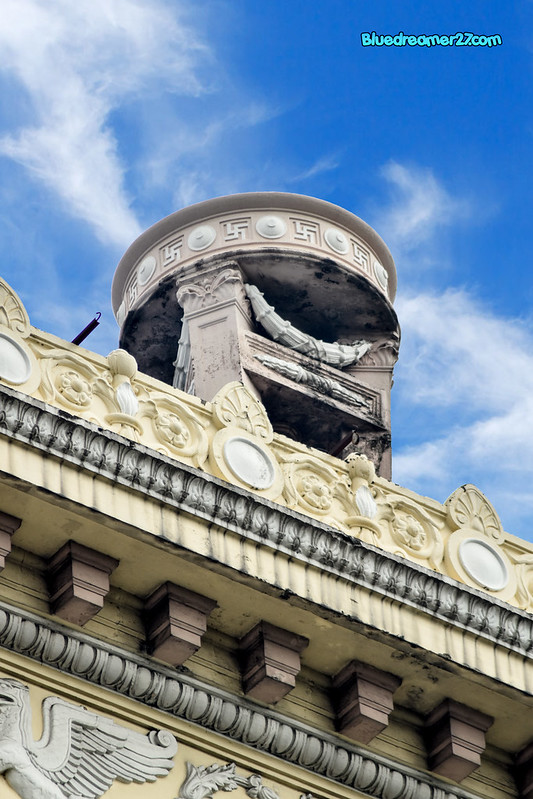
Intricate corner details of the building
 Beautiful European-inspired details
Beautiful European-inspired details

As far as I remember, we were told that these lion heads are part of the building’s old gutter system
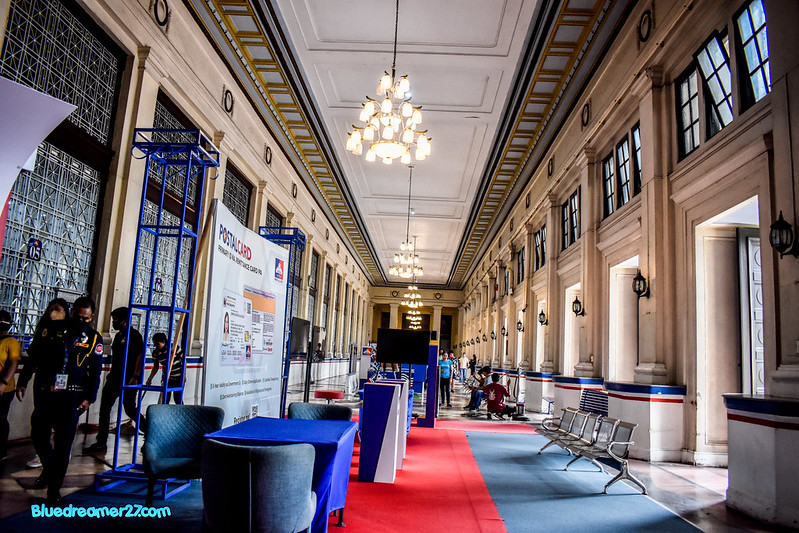
The Lobby

They were also organizing an exhibit when we arrived there, promoting their limited edition stamps.

The post receiving area is guarded with Grecian-style steel grilled windows.
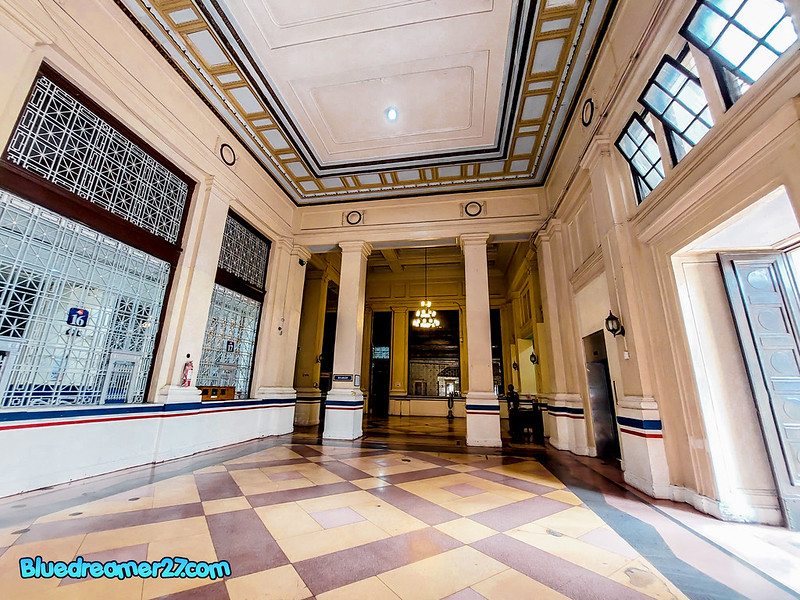

A brief orientation that taught us about Postal History in the Philippines and some unique commemorative stamps that the office had over the years

A postal museum is set in one corner of the main lobby. Displayed were equipment used by the post office in earlier times to weigh and postmark letters and packages.
 A scaled replica of a Universal Postal Union (UPU) Monument by French sculptor Charles René de Paul de Saint-Marceaux that shows five Beaux Arts figures floating around the globe representing the continents.
A scaled replica of a Universal Postal Union (UPU) Monument by French sculptor Charles René de Paul de Saint-Marceaux that shows five Beaux Arts figures floating around the globe representing the continents.

an old cashier device

1955 Model Typewriter

1948 Model Weighing Scale

Mailman’s Bag
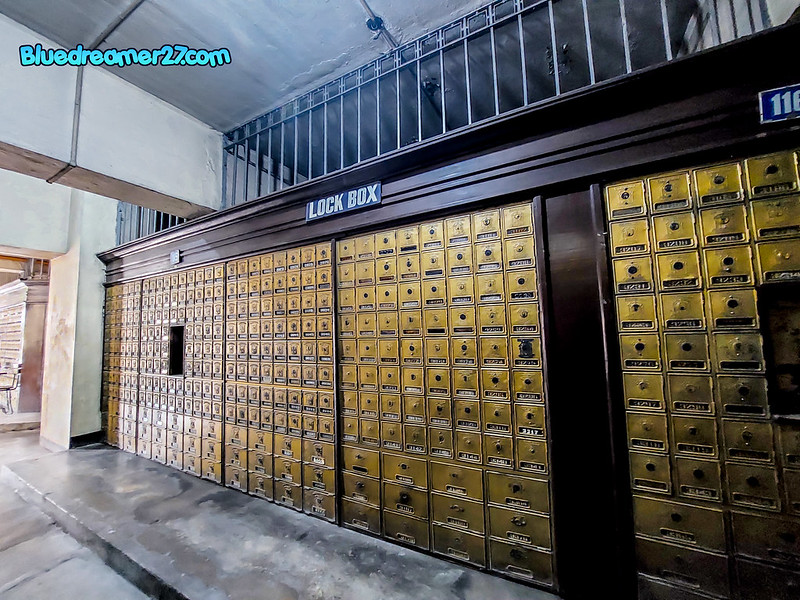
After the orientation, we were all prompted to go downstairs to see their lock boxes. A Lock Box or popularly known as the Post Office (PO) box allows you to have an alternative address to deliver your mail or package instead of giving your home address.
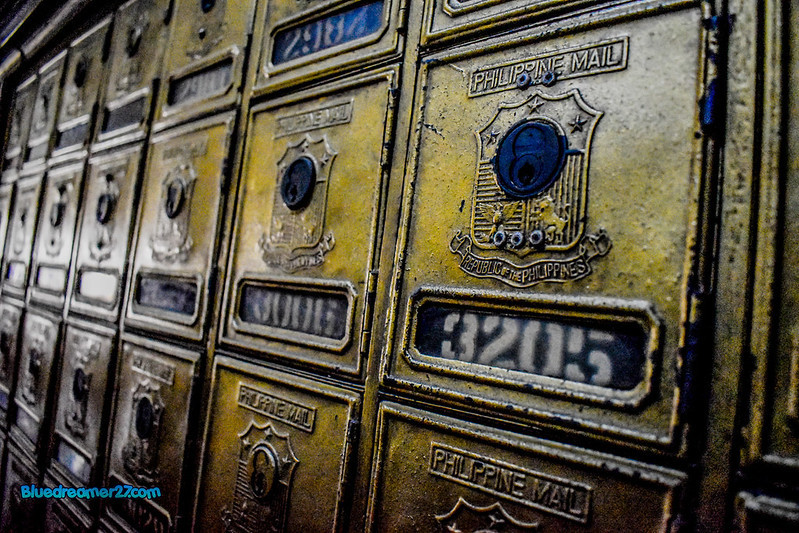 The small doors of these PO Boxes are made of solid bronze.
The small doors of these PO Boxes are made of solid bronze.

 These boxes are almost a century-old and I hope they were able to save these after the fire incident last May. The Manila Central Post Office, by the way, was declared by the National Museum as an Important Cultural Property last 2018.
These boxes are almost a century-old and I hope they were able to save these after the fire incident last May. The Manila Central Post Office, by the way, was declared by the National Museum as an Important Cultural Property last 2018.

There were more than 3000 P.O Boxes that could be rented monthly for personal letters and packages. The demand for these boxes, however, drastically declined since most people are no longer fond of writing letters. Not to mention the increasing demand for electronic mails and many modern applications that are undeniably more convenient and fast way to communicate.
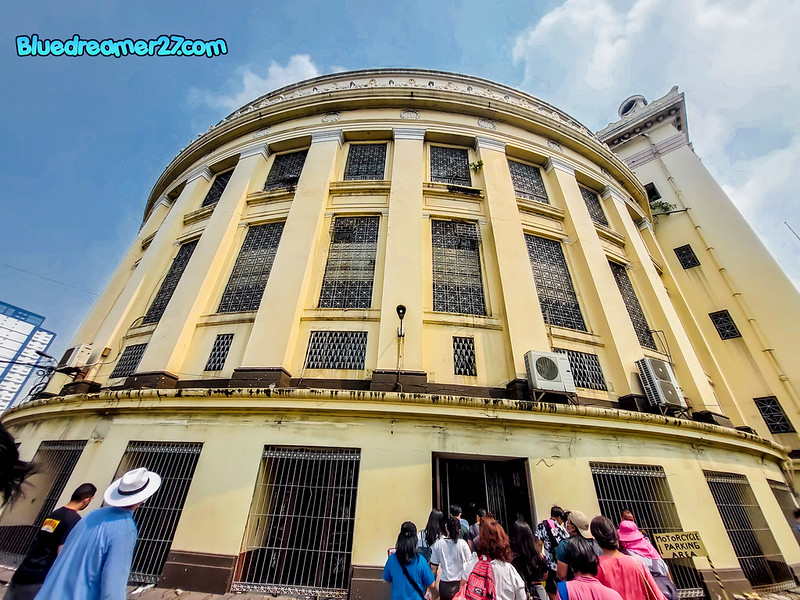
The lockbox room takes you to the exit. Here’s one of the semi-circular wings on the west side of the building.
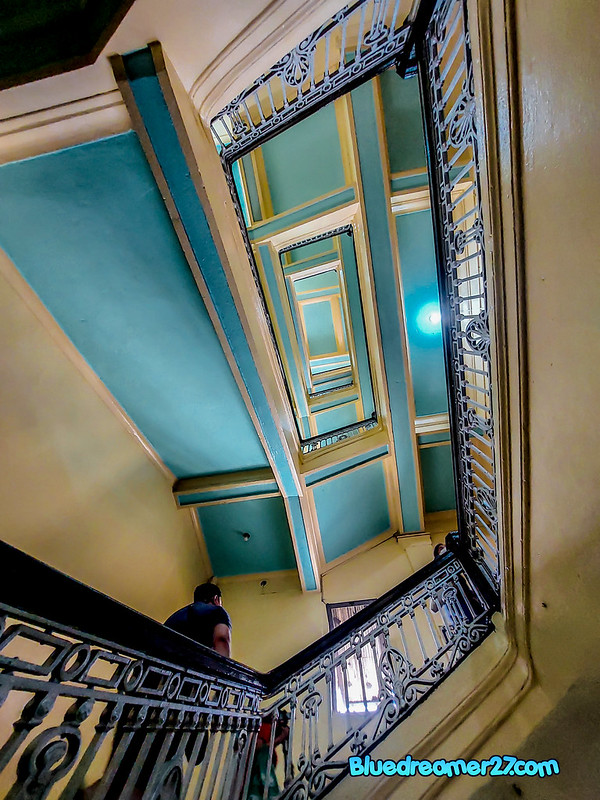
We all went upstairs to explore more rooms.

We came across to what they referred to as “Door 3”, the busiest section of the Manila Central Post Office, or at least during its heyday.
 This is the City Delivery Unit or the “Kartero Center”. This room is where the Kartero or letter carriers pick up the letters to be delivered in various areas in Manila.
This is the City Delivery Unit or the “Kartero Center”. This room is where the Kartero or letter carriers pick up the letters to be delivered in various areas in Manila.
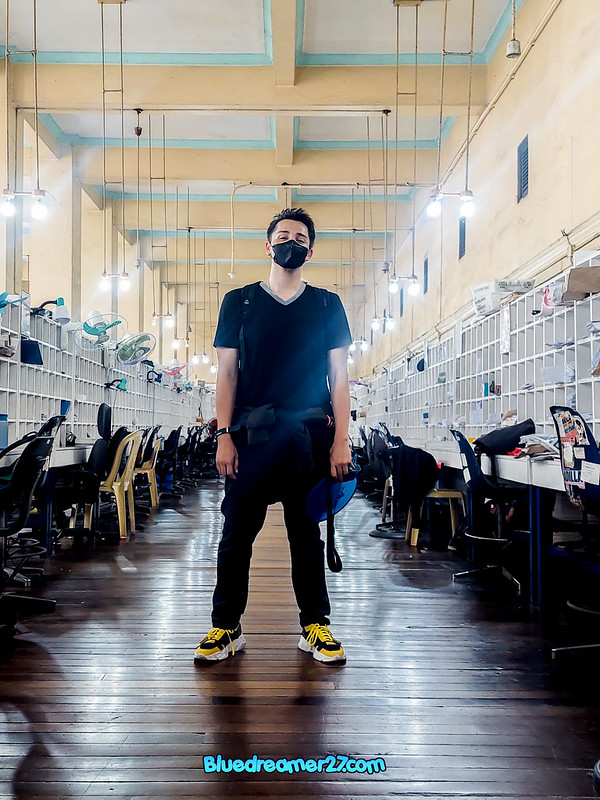 Sadly, the karteros used to carry more than 400 letters and packages in each delivery during their heyday. The amount dwindled to 15 t0 20 letters per delivery and these letters are not even from individuals but from Government agencies like SSS, Bank insurance, and courts.
Sadly, the karteros used to carry more than 400 letters and packages in each delivery during their heyday. The amount dwindled to 15 t0 20 letters per delivery and these letters are not even from individuals but from Government agencies like SSS, Bank insurance, and courts.

It is also sad to see that most of the boxes here are almost empty.

Under this room is another busy section of the office. You can find individual station

We concluded the tour by dropping by their small shop where you can purchase stamps and souvenirs. Of course, i took the opportunity to have these limited edition stamps. These stamps may no longer serve their real purpose today but their worth are becoming even more meaningful for stamp lovers and stamp collectors because of their historic, cultural and educational value.
Let’s all hope that Manila Central Post Office will soon regain its beauty and glory.
This post is part of my Lawton-Arroceros Heritage Tour series. Feel free to check my previous articles here
- Revisiting Manila Central Post Office : What’s Inside the Manila Post Office (Before the Fire Incident)
- Exploring the New Metropolitan Theater
- Exploring Arroceros Forest Park – The Last Lung of Manila
References: Philippine News Agency / CNN Philippines / Inquirer.net /
